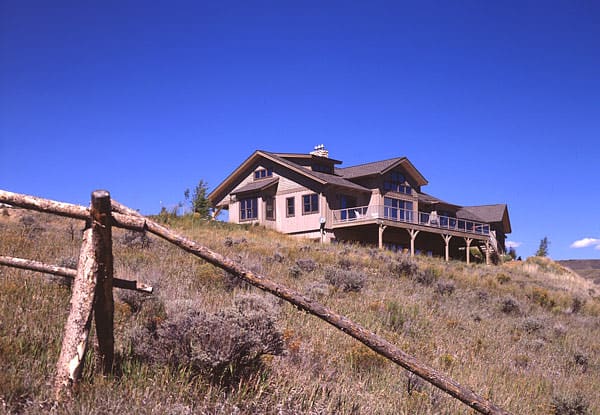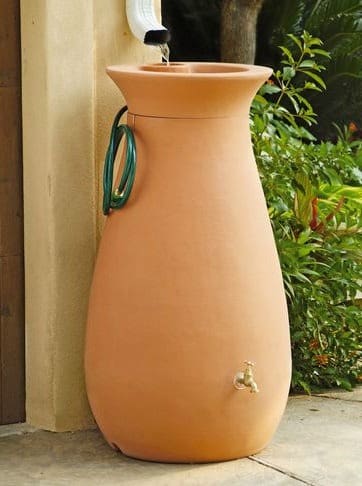With building season getting into full swing, there are so many considerations to make when beginning construction on a new timber frame home. One of the items which is not usually top of mind is managing water on your property. With some regions experiencing record flooding, and others under drought conditions, it’s something that is definitely worth thinking about and planning ahead for.
 Properly managing the rain water on your new home’s lot can help keep your grass green, your garden lush, and your home dry.
Properly managing the rain water on your new home’s lot can help keep your grass green, your garden lush, and your home dry.Harvesting Rain
One way to control runoff and put the water to use is to install a rainwater harvesting system. These systems can be made to fit into almost any budget. A small rain barrel system will cost as little as a hundred dollars; larger harvesting systems cost much more but can harvest thousands of gallons of water. We will cover these systems below, but before you begin planning a system, check your local laws. In some areas, such as most of Colorado, rainwater harvesting may be illegal. In other places, like Santa Fe, rainwater catchment is required on new residential construction.
 This timber frame home in rural Colorado is in a semi-arid climate, and every drop of rain that falls can go a long way to keeping garden plants alive.
This timber frame home in rural Colorado is in a semi-arid climate, and every drop of rain that falls can go a long way to keeping garden plants alive.Rain Barrels
Rain Barrels are an inexpensive way to store and use small quantities of water. The simplest rain barrels attach directly to your gutter’s downspout and thus store the runoff from the roof. A tap at the bottom of the barrel allows you to attach a hose and dispense the water. These barrels typically range from 50 to 100 gallons, but some larger barrels may be upwards of 200 gallons. Although this may sound like a large volume, one rainstorm can easily fill one of these barrels. For example, a 100 gallon barrel draining a small, 100 square foot section of roof would be filled with only one and a half inches of rain. If you wish to make better use of the rain that falls on your roof, then a larger system would be in order.

Rain Tanks
If you are looking for a larger system than a few rain barrels, then you will want to consider a central tank to store the water. In this system, your gutters connect to a common supply line running to a large tank. The tank can be made of fiberglass, steel or plastic; flexible bladders are also available. Systems typically are at least 500 gallons and range up to several thousand gallons. These tanks can be buried for less aesthetic disruption, but this will obviously increase cost. In addition to the cost of burial, a buried tank will require a pump to distribute the water, while a tank at ground level can use a gravity fed distribution system if high-flow/high-pressure water is not needed.

Of course, the time to think about a rain management system is before you break ground for your new timber frame home. If you have any questions about the methods and systems we’ve described here, let us know. You can leave a comment and pose a question. Or, if you’re interested in simply getting your new timber frame home’s plan finalized, contact Timberpeg to get started. In no time, you too could be relaxing in a well-managed yard with no worries about rain showers.


